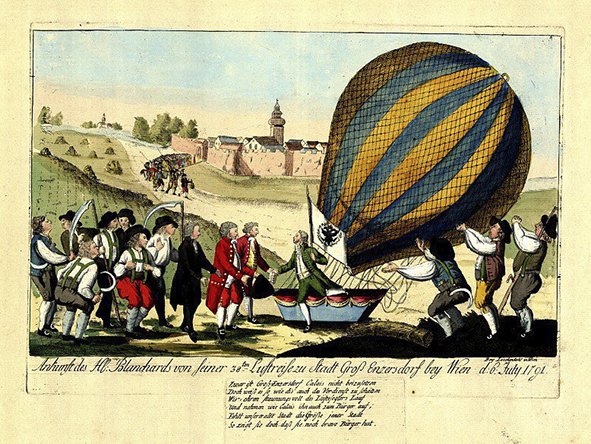Mozart to his wife Constanze, Vienna, 6 July 1791:
- Even as I write these lines, Blanchard will either go up — or else he’ll fool the Viennese for a third time! — All this to-do with Blanchard is most unwelcome to me today — it’s preventing me from finishing off my business.

The arrival of H. Blanchard on his 48th aerial voyage at the town of Gross Enzersdorf near Vienna, 6 July 1791. Anonymous engraving, Vienna, 1791
The French balloonist François Blanchard (1753-1809) had made two unsuccessful attempts to ascend over Vienna in a hot air balloon, on 9 March and 29 April 1791; he was successful at his third attempt on 6 July, the date of Mozart’s letter. The next day Mozart wrote to Constanze:
- I did not go to see the balloon, for it is the sort of thing which one can imagine. Besides, I thought that this time too nothing would come of it. But goodness! How the Viennese are rejoicing! They are as full of his praises now as they have been up to the present of abuses.
Nevertheless, Mozart at the time was working on Die Zauberflöte K620, the first-act finale of which begins with the Three Boys descending in a balloon. The opera was first performed at Vienna just under three months later, on 30 September.